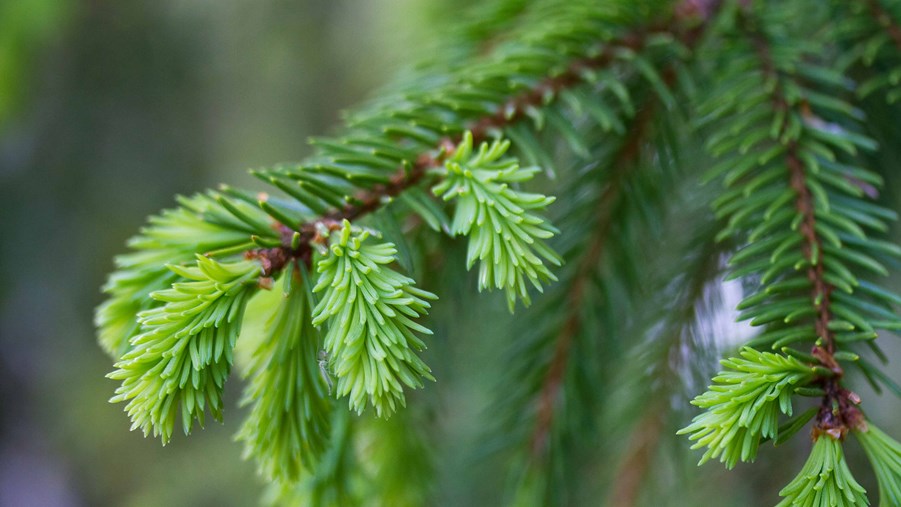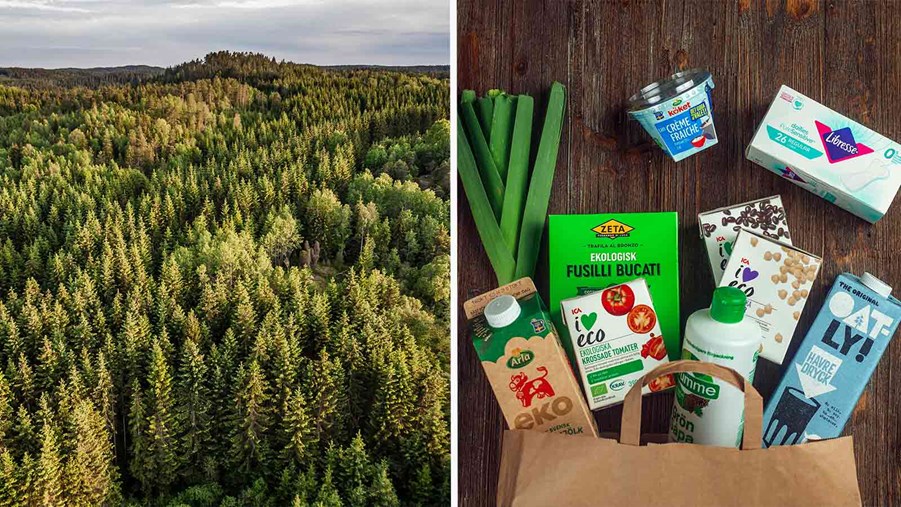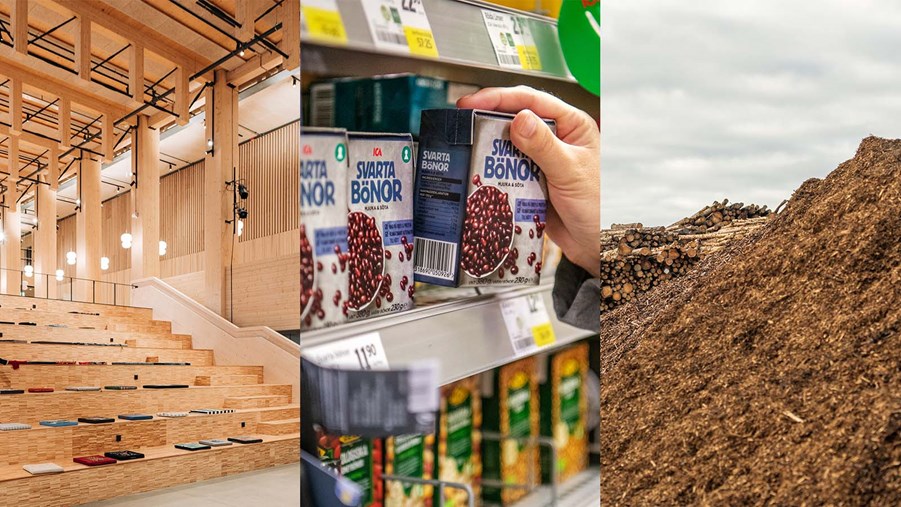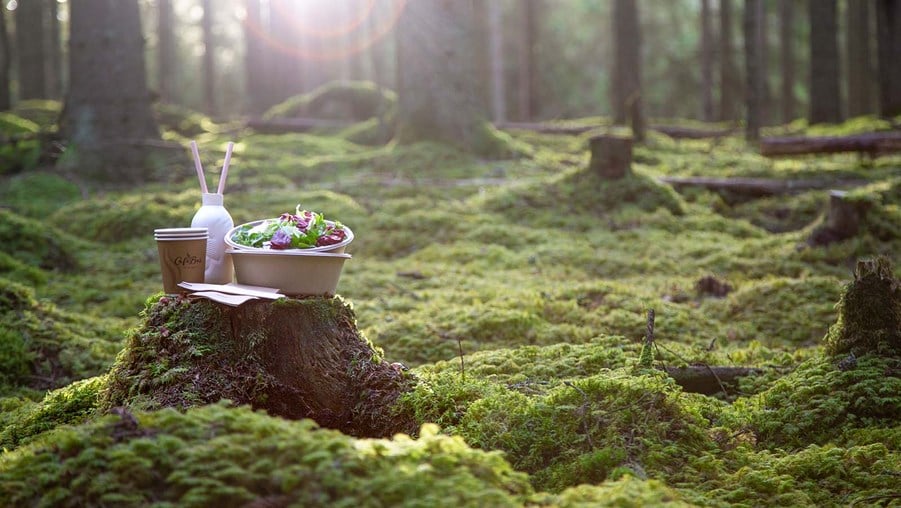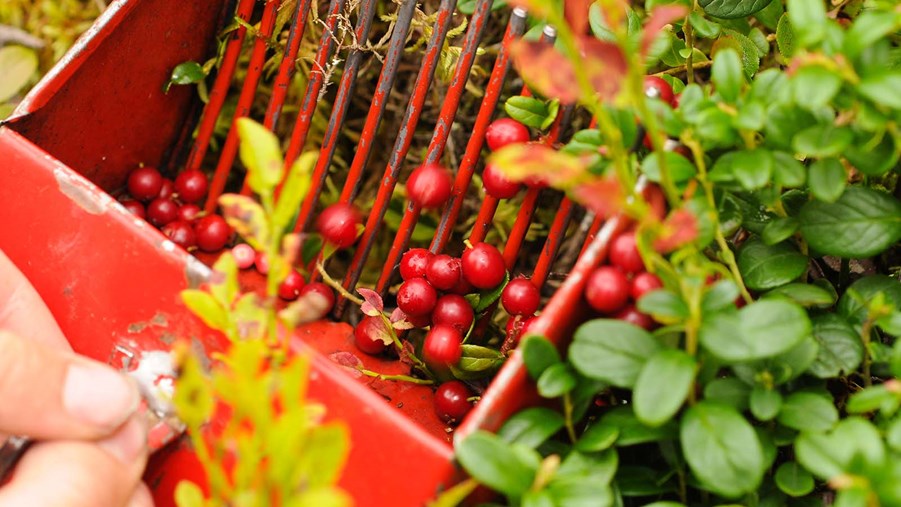The growing forest, and the products made from forest raw material, are both essential for curbing climate change. Find out more about how forest carbon sinks work, how they help mitigate climate change, and the importance of utilising the forest from a climate perspective.
Carbon sink, carbon storage and carbon sequestration
-
A carbon sink (or carbon dioxide sink) is a growing carbon pool – i.e., anything that absorbs more carbon from the atmosphere than it releases. The opposite of a carbon sink is a carbon source. Forests and oceans are examples of carbon sinks.
As trees grow, they absorb carbon dioxide from the atmosphere and convert it into carbon, which they use to grow. Growing forests are one of our planet’s most effective natural carbon sinks.
-
Carbon circulates between forests, society and the atmosphere in a biogenic cycle. Trees absorb carbon dioxide from the air and convert it into carbon that is stored in their biomass (i.e., trunk, branches, etc.). When trees are harvested and used to make wood products, paper, cardboard, textiles etc., the carbon remains stored in these products throughout their useful lives. When the wood fibre in its final product life cycle is combusted as bioenergy, or when trees die in the forest and are broken down by microorganisms and fungi, the absorbed carbon is re-released to the atmosphere be become available again for plants. The cycle is closed.
-
The Swedish forest grows an average of 120 million cubic metres every year. As it grows these 120 million cubic metres, it absorbs over 140 million tonnes of carbon dioxide. The net carbon sequestration in forests and products is around 37 million tonnes per year. This can be compared with total Swedish carbon emissions (including international transport) of 60 million tonnes per year.
-
Carbon sinks are one of the three components* of the climate benefits of forests. Growing trees sequester carbon from the air and create carbon sinks. In 2023, carbon sinks in Sweden sequestered 31 million tonnes of CO2. Forest carbon sinks do not last forever. When trees die, carbon dioxide is re-released into the atmosphere. When trees are harvested, on the other hand, carbon dioxide remains stored in wood-based products.
While carbon sinks in growing trees are a valuable contribution to the climate, climate action needs to focus on reducing fossil emissions because it is these that cause the greenhouse effect. We can avoid these emissions by using renewable materials from the forest instead of fossil-intensive materials. This is where wood-based products have the greatest climate benefit.
*The forest sector’s total climate impact is calculated as the sum of the net carbon sink in the forest and forest products, emissions that are averted when fossil fuels are replaced with renewables from the forest (substitution), and fossil emissions in the forest sector’s own value chain.
-
The volume of standing stock in Swedish forests has doubled in the past 100 years due to improved forest management and to legislation such as the 1903 Forestry Act, which decreed that harvested forests must be replanted. The amount of stored carbon has increased by 2 billion tonnes during this period. Forest growth appears to have slowed down over the past ten years, but remains at a high level over a longer time perspective. It is difficult to determine whether this is a temporary effect from years of drought and insect infestation, or a longer-term effect of climate change. This trend shows, though, that raising forest carbon sequestration targets from today’s already high levels is not necessarily the right course of action. Another viable conclusion is that forestry needs to work proactively to increase forest growth in order to maintain its high carbon sink.
-
Low growth is the main reason the Swedish carbon sink is lower today than it was 10 years ago. Why is the forest growing less well? One reason is hot, dry summers. Another reason is infestation by pest insects, the bark beetle in particular. Some areas of Sweden have also been hit by severe storms that felled trees. These are natural occurrences, which always happen in nature. But climate change is also a factor. Forestry needs to make a concentrated effort to maintain forest growth under changing conditions.
-
High growth creates conditions for a high carbon sink. In retrospect, there is clear evidence of this: In 1990, when gross felling totalled 65.9 million cubic metres standing volume (m3sk), the forest carbon sink was at the same level as it was in 2015 when 89.9 million m3sk (i.e., much more) was felled.
In the debate it is sometimes argued that the carbon sink decline is due to record-high felling levels. But these levels have remained stable since the turn of the century, with slight variations from year to year depending on demand. For many years, the forestry sector has been investing heavily in silviculture to increase felling levels in the long term and meet demands for renewable, fossil-free material. Ambitions need to be raised, however. An average of 92.9 million m3sk were felled between 2000 and 2023. Between 2000 and 2023, average felling was 88.6 million m3sk. In 2005 and 2007, felling was historically high due to storms Gudrun and Per.
-
A prerequisite for increasing the forest carbon sink is having a healthy, growing forest, because it is the growing trees that bind carbon dioxide. Essential measures to ensure good forest growth include harvesting trees when their growth has slowed (this happens when they are 70-120 years old, depending on where in Sweden the forest is located), rapid replanting, use of seedlings, and cleaning, thinning and fertilising.
-
One example of a carbon sink is a forest, where growing trees absorb carbon dioxide from the atmosphere through photosynthesis. Forest carbon sinks are created when forest growth is greater than the rate of felling and natural dieback (i.e., trees that die and decompose).
Carbon storage refers to the carbon contained in a system or a reservoir that has the capacity to gather or release carbon, such as forest products.
Carbon sequestration is the net absorption of carbon dioxide from the atmosphere over a given period of time.
-
Carbon is an element found in forests, soil, oceans, the atmosphere and living organisms.
Carbon dioxide is the gas, made up of carbon and oxygen atoms, which is formed when carbon is burned.
-
All carbon dioxide molecules look the same, but they come from different sources. Biogenic carbon dioxide is part of the atmospheric carbon cycle. Fossil carbon dioxide is released when oil, coal and natural gas – which have been stored in the Earth’s crust for millions of years – are burned. This adds new quantities of carbon dioxide to the atmosphere and is the main driver of climate change.
-
Trees sequester the most carbon when they are growing. Growth slows as trees grow old, and so does carbon sequestration.
-
In forests that are managed, trees grow better and sequester more carbon than trees that are left untouched and stop growing. Good forest growth is achieved through measures such as harvesting trees when their growth has slowed (this happens when they are 70-120 years old, depending on where in Sweden the forest is located), rapid replanting, use of seedlings, and cleaning, thinning and fertilising.
